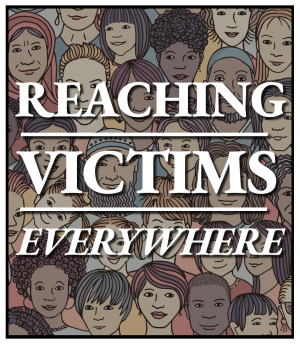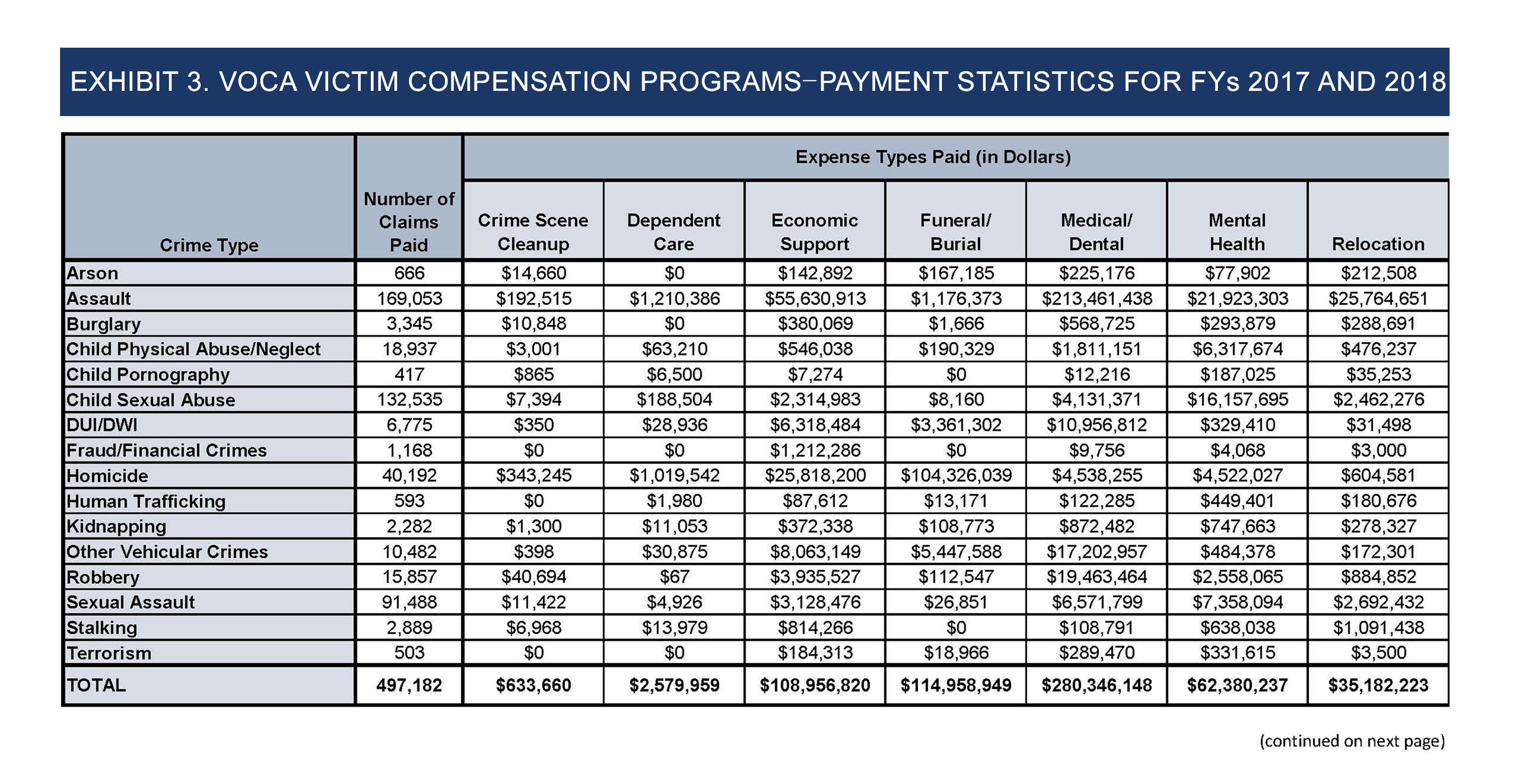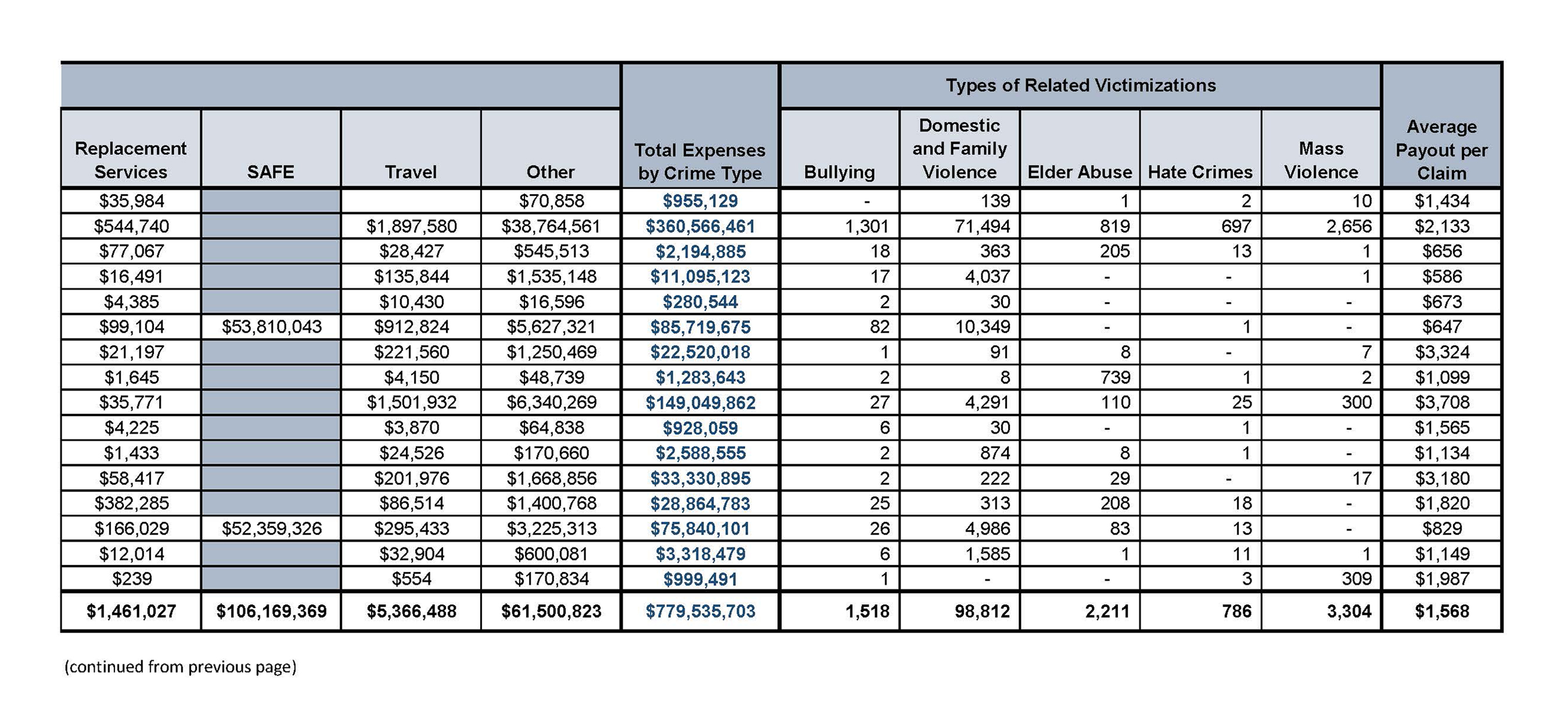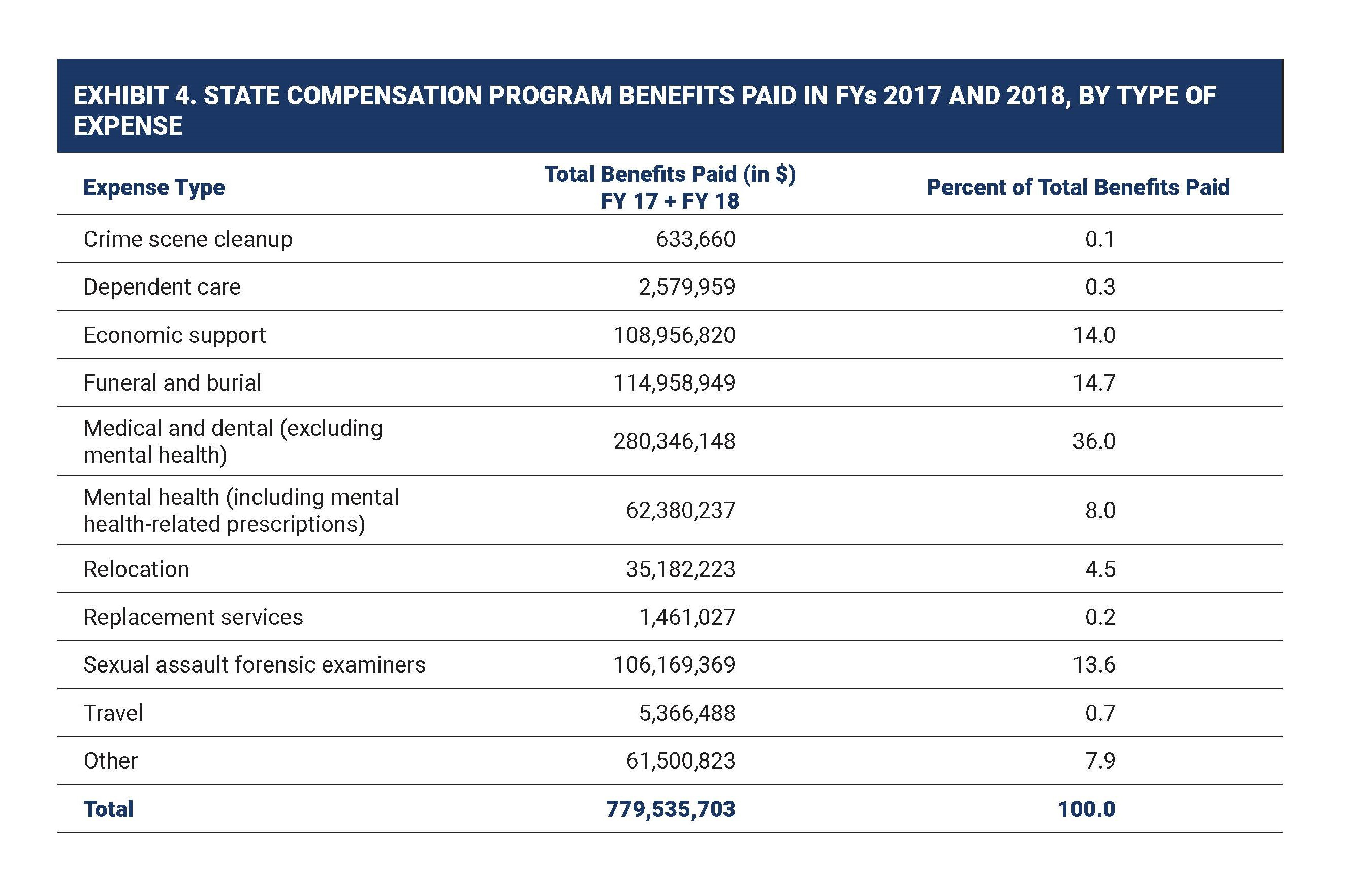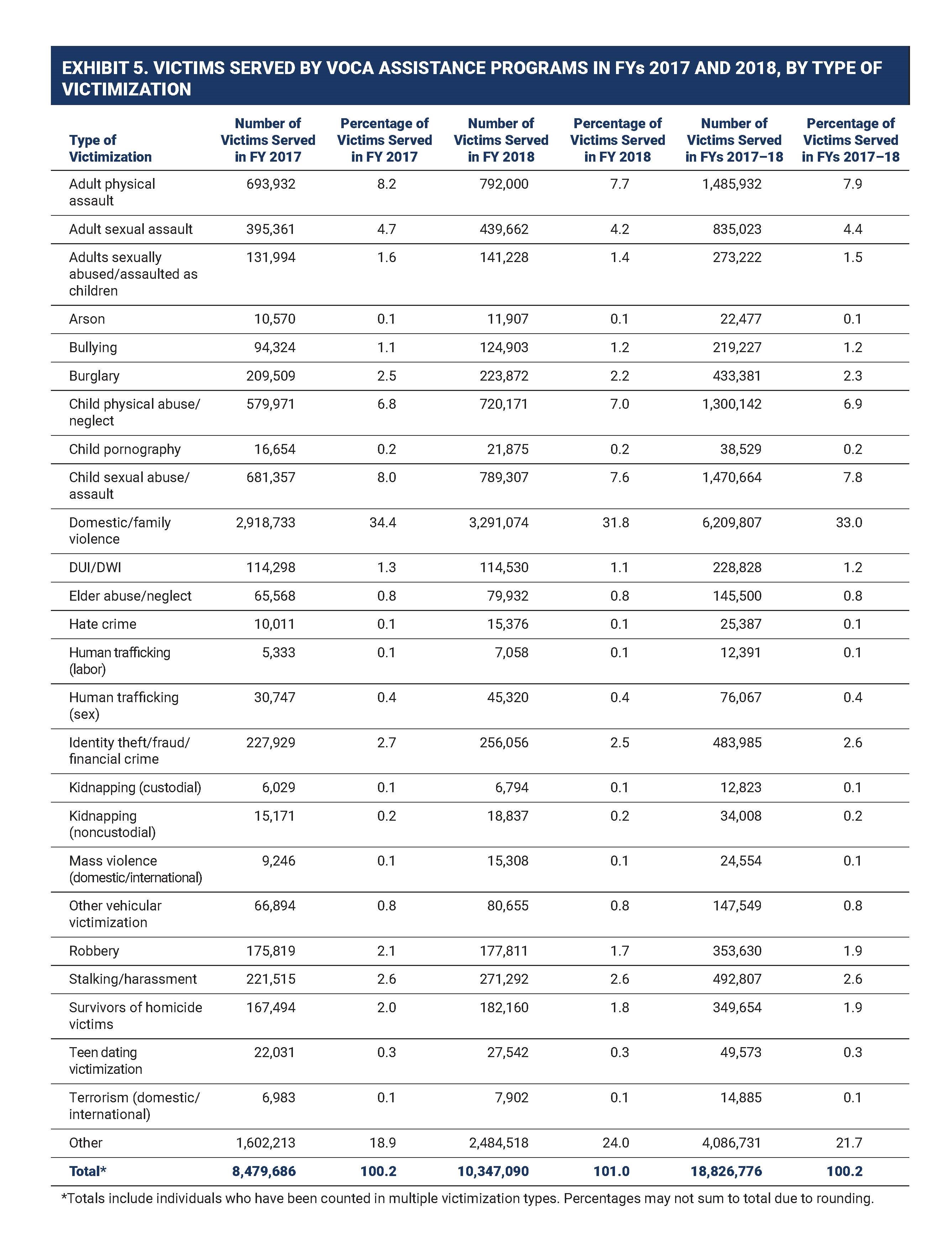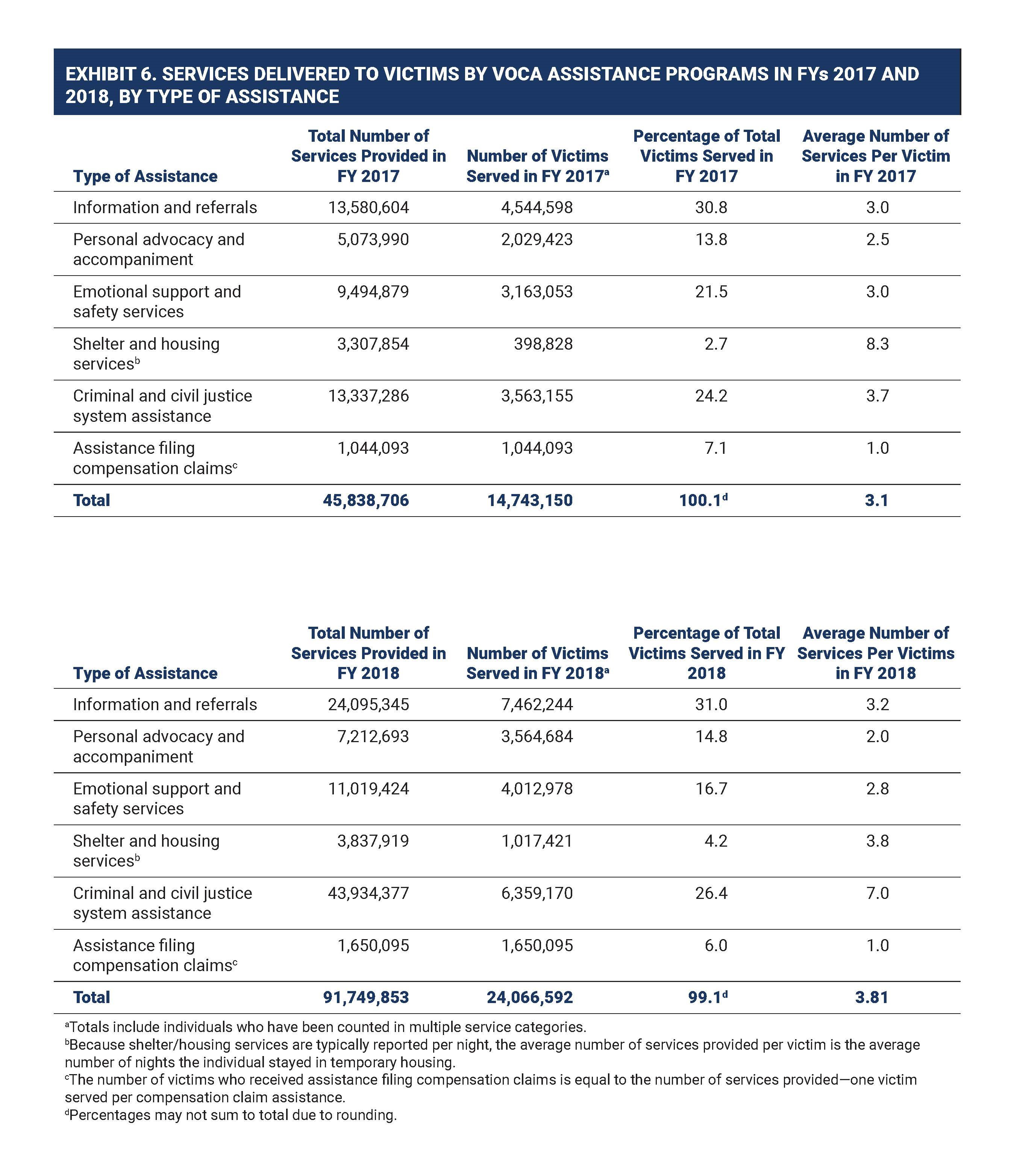Formula Grants: VOCA Compensation and Assistance
OVC administers two Victims of Crime Act (VOCA) formula grant programs that support crime victim compensation and assistance—the foundation of support for victims throughout the Nation. These formula grants account for approximately 95 percent of the VOCA funds that OVC disburses each year.
- The VOCA Victim Compensation Grant Program provides funding to supplement state compensation programs that reimburse victims for crime-related out-of-pocket expenses. Each year, VOCA victim compensation grants are awarded to every state, the District of Columbia, the U.S. Virgin Islands, and Puerto Rico to support costs for medical and dental care, counseling, funeral and burial expenses, and lost wages. Compensation programs may also reimburse victims for other types of expenses related to their victimization, such as travel, temporary lodging, crime scene cleanup, and dependent care. Although each state administers its program independently, most programs have similar eligibility requirements and offer comparable benefits.
- The VOCA Victim Assistance Grant Program supports thousands of direct victim assistance providers. Annual VOCA victim assistance grants are awarded to every state, the District of Columbia, Puerto Rico, the U.S. Virgin Islands, Guam, American Samoa, and the Northern Mariana Islands. Each state and territory provides subgrants to local community-based organizations and public agencies that provide services—such as intervention and crisis counseling, telephone and onsite information and referrals, criminal justice support and advocacy, shelter, therapy, and additional assistance—directly to victims. Funds may also be used to develop new programs that address emerging needs, gaps in services, and training for victim service providers.
Increases in the Crime Victims Fund appropriation cap have enabled states to dramatically expand their support for both new and existing victim service programs. In FY 2018, OVC's VOCA victim compensation and victim assistance awards totaled more than $3.4 billion, surpassing every other single-year grant amount in the program’s 34-year history. OVC awarded more than $128 million in VOCA victim compensation funds and $3.328 billion in VOCA victim assistance funds in FY 2018.
In FY 2018, OVC successfully transitioned all victim assistance and compensation grant program reporting to the new Performance Measurement Tool, which provides more robust performance measurement and will enable OVC to identify nationwide variables and trends associated with these programs.
VOCA Compensation Statistics
- In FYs 2017 and 2018, VOCA state compensation payments to 497,182 victims throughout the Nation totaled $779,535,703 (exhibit 3).
- The majority of victims whose crime-related expenses were reimbursed were victims of assault (169,053 claims paid), child sexual abuse (132,535 claims paid), and sexual assault (91,488 claims paid) (exhibit 3).
- Claims related to domestic and family violence accounted for 42 percent of the total number of assault claims that were reimbursed during FYs 2017 and 2018 (see exhibit 3).
- Costs related to medical and dental care accounted for 36 percent of the total expenses reimbursed, followed by costs associated with funeral and burial (15 percent) and economic support (14 percent) (exhibit 4).
- The overall average compensation per claim during the reporting period was approximately $1,568, with homicide payouts averaging the most, at $3,708 per claim (exhibit 3).
- Of the 96 percent of victims who self-reported their gender, females constituted 61 percent.
- Of the 91 percent of victims who self-reported their age, 50 percent were 25–59 years old at the time of victimization.
VOCA Assistance Statistics
- In FYs 2017 and 2018, a total of 18,826,776 crime victims benefited from VOCA-funded assistance throughout the Nation (exhibit 5).
- Victims of domestic violence, who numbered 6,209,807, accounted for 33 percent of victims who received assistance during the reporting period (exhibit 5).
- More than 2.7 million victims of child physical or sexual abuse (accounting for 15 percent of crime victims) received assistance—second only to victims of domestic violence (exhibit 5).
- Other types of crimes resulting in a marked percentage of victims receiving assistance in FYs 2017 and 2018 included assault (8 percent), adult sexual assault (4 percent), stalking/harassment (3 percent), and identity theft/fraud/financial crime (3 percent) (exhibit 5).
- In FYs 2017 and 2018, the most common type of assistance provided was information and referrals (31 percent per year). Most frequent among these services were information about victims' rights and how to obtain notifications (see exhibit 6).
- In FYs 2017 and 2018, VOCA assistance grants supported 137,588,559 specific services for 38,809,742 victims of crime. Many individuals need more than one type of assistance in the aftermath of victimization. During this time period, each victim received an average of 3.55 services (exhibit 6).
Please note that the statistics reported in this section reflect those contained in the 2017 and 2018 VOCA Nationwide Performance Reports, which consolidate the information reported in the individual state and territorial reports.


